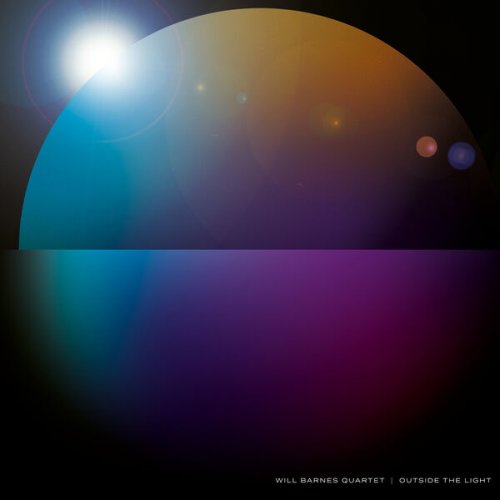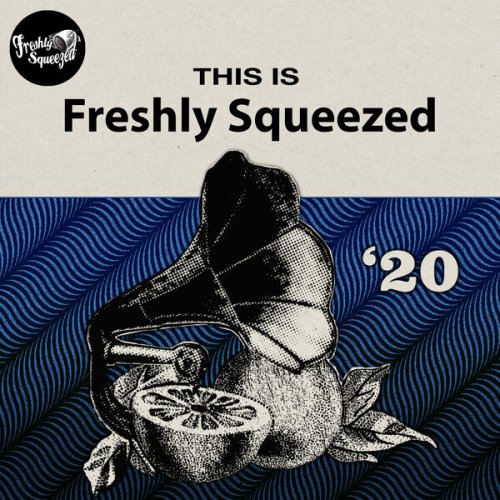Quartetto Cherubini - Singelée, Jonas, Savari, Sellenick, Cressonnois, Kreutzer, Mohr, Mayeur: Origines (19th Century European Saxophone Quartets) (2023)

Artist: Quartetto Cherubini
Title: Singelée, Jonas, Savari, Sellenick, Cressonnois, Kreutzer, Mohr, Mayeur: Origines (19th Century European Saxophone Quartets)
Year Of Release: 2023
Label: Da Vinci Classics
Genre: Classical
Quality: FLAC (tracks)
Total Time: 71:41 min
Total Size: 247 MB
WebSite: Album Preview
Tracklist:Title: Singelée, Jonas, Savari, Sellenick, Cressonnois, Kreutzer, Mohr, Mayeur: Origines (19th Century European Saxophone Quartets)
Year Of Release: 2023
Label: Da Vinci Classics
Genre: Classical
Quality: FLAC (tracks)
Total Time: 71:41 min
Total Size: 247 MB
WebSite: Album Preview
01. Premier Quatuor, Op. 53: I. Andate – Allegro (Arranged By Jean-Marie Londeix)
02. Premier Quatuor, Op. 53: II. Adagio sostenuto (Arranged By Jean-Marie Londeix)
03. Premier Quatuor, Op. 53: III. Allegro vivace (Arranged By Jean-Marie Londeix)
04. Premier Quatuor, Op. 53: IV. Allegretto (Arranged By Jean-Marie Londeix)
05. Prière
06. Quatuor: I. Allegretto (Arranged By Paul Wehage)
07. Quatuor: II. Allegretto quasi Allegro (Arranged By Paul Wehage)
08. Quatuor: III. Andante, quasi Adagio (Arranged By Paul Wehage)
09. Quatuor: IV. Allegro moderato (Arranged By Paul Wehage)
10. Andante religioso (Arranged By Serge Bertocchi)
11. Pifférari (Arranged By Serge Bertocchi)
12. Grand Quatuor Concertant
13. Quatuor
14. Quatuor (Arranged By Serge Bertocchi)
15. Premier Quatuor: I. Allegro grazioso (Arranged By Serge Bertocchi)
16. Premier Quatuor: II. Andante (Arranged By Serge Bertocchi)
17. Premier Quatuor: III. Allegro vivo (Arranged By Serge Bertocchi)
18. Allegro de Concert (Arranged By Edward Abraham Lefèbre)
“There is no other musical instrument that I know of which possesses this strange resonance, located on the border of silence… There is no low-pitched instrument in use today that can be compared to the saxophone.” With these words, in 1849, the great French composer Hector Berlioz welcomed the newly invented saxophone.
Adolphe Sax, the son of another musical instrument maker, is known for inventing the saxophone, but this was only one of his many innovations. Sax also developed and codified the family of flugelhorns, as well as made important modifications to flutes and clarinets.
In 1842, Sax left his hometown of Dinant in Belgium and headed to Paris in search of fortune. Just a year after the saxophone’s first public appearance, Sax became the greatest musical instrument maker in France. He even secured a monopoly on supplying instruments to military bands. Above all, in 1857, he was appointed professor of the first saxophone chair in history at the Gymnase Militaire in Paris. This contributed to the development of the classical dimension of the instrument and encouraged many composers, especially Sax’s friends and colleagues, to write new pieces.
The first chamber composition for a saxophone ensemble was a sextet, Jean-Georges Kastner’s Sextuor, composed in 1844 – even before Sax had officially patented the new instrument. Shortly thereafter, the saxophone quartet emerged as the most widespread and appreciated formation.
Between the 1850s and 1860s, Sax’s repertoire experienced a notable and sudden flowering. Twelve works for saxophone quartet were written between 1857 and 1870, although only nine are currently available. Adolphe Sax was well aware that the creation of an original repertoire and the circulation of the saxophone among composers and musicians were crucial to the success of the new instrument. He founded a publishing house that brought together many of the works written during those years by colleagues, friends, and supporters.
The authors of the works collected in this recording belong to what we could call “the circle of Sax”: a group of composers, performers, colleagues, and friends who actively supported his enterprise by adopting his instruments and writing for them. Most of them belonged roughly to the same generation as Sax, with the exception of Louis-Adolphe Mayeur, who was one of Sax’s first students at the Gymnase Militaire and a virtuoso saxophonist, as well as a clarinetist. Jean-Baptiste Mohr was an orchestra conductor and hornist, Jean-Baptiste Singelée was a violinist, Emile Jonas taught solfeggio at the Paris Conservatory, and Kastner, who also wrote the first saxophone method in 1855, was a close friend of Sax. Some confusion surrounds the name of Savary, as the piece published by Sax only cites the surname. The work has been attributed at times to the bassoonist Jean-Nicholas Savary, and at other times to the military band director Jérôme Savari.
All of these musicians were somehow involved in the world of opera, a genre of fundamental importance for French music in the mid-19th century. Not only did they perform and/or execute operas, but they also wrote about them as journalists or music critics. This interest is immediately reflected in their compositions for quartets, which often adopt a lyrical and melodic style, seeking out beautiful accompanied melodies, rather than counterpoint, and don’t exhibit particularly innovative or experimental traits. As American scholar Timothy Ruedemann put it, “Although their quartets were composed in the second half of the 19th century, they rightfully belong in the operatic realm of the first half of the century. They shouldn’t be situated in the context of the more innovative composers of the late 19th century, such as Fauré, Franck, or Debussy.”
The original intention of this recording is to breathe new life into a significant part of the saxophone quartet repertoire, a season that has been largely ignored by performers (with the exception of the Premier Quatuor and the Grand Quatuor by Singelée). Despite the rather traditional style, these pieces offer an important perspective on the origins of the saxophone in its chamber music dimension. Two other recordings, dating back almost three decades, have taken into consideration the ‘circle of Sax’ (one by the Italian Quartetto Accademia in 1994 and the other by the French Quatuor Ars Gallica in 1996), but this work features four world premiere recordings: Léon Kreutzer’s Quatuor (1864), Jules Cressonnois’s brief Pifférari and Adolphe Sellenick’s Andante Religioso (both from 1861), and Singelée’s Allegro de Concert (1859) – the latter included as a bonus track, being nothing more than a variation on the Allegro from the Premier Quatuor.
From this point of view, Origines represents the first recording of the entire European 19th-century saxophone quartet repertoire.
Adolphe Sax, the son of another musical instrument maker, is known for inventing the saxophone, but this was only one of his many innovations. Sax also developed and codified the family of flugelhorns, as well as made important modifications to flutes and clarinets.
In 1842, Sax left his hometown of Dinant in Belgium and headed to Paris in search of fortune. Just a year after the saxophone’s first public appearance, Sax became the greatest musical instrument maker in France. He even secured a monopoly on supplying instruments to military bands. Above all, in 1857, he was appointed professor of the first saxophone chair in history at the Gymnase Militaire in Paris. This contributed to the development of the classical dimension of the instrument and encouraged many composers, especially Sax’s friends and colleagues, to write new pieces.
The first chamber composition for a saxophone ensemble was a sextet, Jean-Georges Kastner’s Sextuor, composed in 1844 – even before Sax had officially patented the new instrument. Shortly thereafter, the saxophone quartet emerged as the most widespread and appreciated formation.
Between the 1850s and 1860s, Sax’s repertoire experienced a notable and sudden flowering. Twelve works for saxophone quartet were written between 1857 and 1870, although only nine are currently available. Adolphe Sax was well aware that the creation of an original repertoire and the circulation of the saxophone among composers and musicians were crucial to the success of the new instrument. He founded a publishing house that brought together many of the works written during those years by colleagues, friends, and supporters.
The authors of the works collected in this recording belong to what we could call “the circle of Sax”: a group of composers, performers, colleagues, and friends who actively supported his enterprise by adopting his instruments and writing for them. Most of them belonged roughly to the same generation as Sax, with the exception of Louis-Adolphe Mayeur, who was one of Sax’s first students at the Gymnase Militaire and a virtuoso saxophonist, as well as a clarinetist. Jean-Baptiste Mohr was an orchestra conductor and hornist, Jean-Baptiste Singelée was a violinist, Emile Jonas taught solfeggio at the Paris Conservatory, and Kastner, who also wrote the first saxophone method in 1855, was a close friend of Sax. Some confusion surrounds the name of Savary, as the piece published by Sax only cites the surname. The work has been attributed at times to the bassoonist Jean-Nicholas Savary, and at other times to the military band director Jérôme Savari.
All of these musicians were somehow involved in the world of opera, a genre of fundamental importance for French music in the mid-19th century. Not only did they perform and/or execute operas, but they also wrote about them as journalists or music critics. This interest is immediately reflected in their compositions for quartets, which often adopt a lyrical and melodic style, seeking out beautiful accompanied melodies, rather than counterpoint, and don’t exhibit particularly innovative or experimental traits. As American scholar Timothy Ruedemann put it, “Although their quartets were composed in the second half of the 19th century, they rightfully belong in the operatic realm of the first half of the century. They shouldn’t be situated in the context of the more innovative composers of the late 19th century, such as Fauré, Franck, or Debussy.”
The original intention of this recording is to breathe new life into a significant part of the saxophone quartet repertoire, a season that has been largely ignored by performers (with the exception of the Premier Quatuor and the Grand Quatuor by Singelée). Despite the rather traditional style, these pieces offer an important perspective on the origins of the saxophone in its chamber music dimension. Two other recordings, dating back almost three decades, have taken into consideration the ‘circle of Sax’ (one by the Italian Quartetto Accademia in 1994 and the other by the French Quatuor Ars Gallica in 1996), but this work features four world premiere recordings: Léon Kreutzer’s Quatuor (1864), Jules Cressonnois’s brief Pifférari and Adolphe Sellenick’s Andante Religioso (both from 1861), and Singelée’s Allegro de Concert (1859) – the latter included as a bonus track, being nothing more than a variation on the Allegro from the Premier Quatuor.
From this point of view, Origines represents the first recording of the entire European 19th-century saxophone quartet repertoire.


![Dykdypp - Huggutullinn (2025) [Hi-Res] Dykdypp - Huggutullinn (2025) [Hi-Res]](https://www.dibpic.com/uploads/posts/2025-11/1762578170_v8riuiw6ffzfb_600.jpg)



![Scandinavian Art Ensemble - The Copenhagen Session Vol. 2 (2025) [Hi-Res] Scandinavian Art Ensemble - The Copenhagen Session Vol. 2 (2025) [Hi-Res]](https://img.israbox.com/img/2025-11/07/uc7jihx4dxcdxce9wmxamlt2t.jpg)

![Mario Bočić Quartet - Wheel Of Fortune (2025) [Hi-Res] Mario Bočić Quartet - Wheel Of Fortune (2025) [Hi-Res]](https://www.dibpic.com/uploads/posts/2025-11/1762579989_cover.jpg)